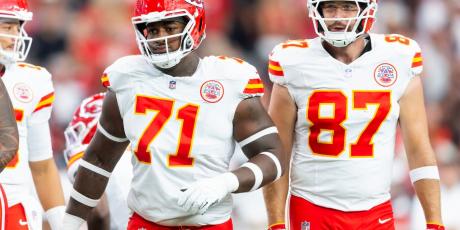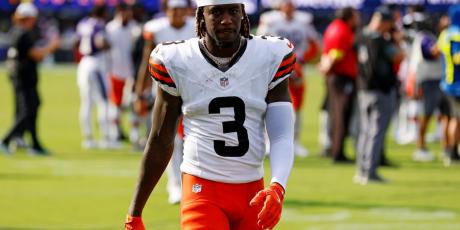NFL Combine Review and Comparisons: Running Backs

In the third installment of this short series, I'll be examining the combine results of the incoming rookie running backs using a Principal Component Analysis along with some clustering. The first part covers the methodology of the analysis that I did, followed by a couple of player-specific notes on some tight ends that showed out on Friday night.
More Combine Analysis by Position: WR | TE
Methodology
Before I get into the analysis, I want to explain the methodology and techniques that I used along with delineating what this analysis is and, more importantly, what it is not. Let's start off with the latter.
This analysis is a descriptive way to compare a player's 2022 combine results to historical results. This is not a predictive indicator of future NFL and fantasy success or that a player with a similar combine result will have the same career.
In terms of the methodology, I used a Principal Component Analysis (PCA) using data from the NFL combine since 2000 (keep in mind that there was no combine in 2021), courtesy of Pro Football Reference. If you're unfamiliar with PCA, it is a way to "squish" several variables (in this case, each of our combine metrics), into just a couple variables - our principal components - thus simplifying our dataset and reducing noise. Put another way, PCA helps us find fewer features that will represent our data in a more compressed way.
This also allows me to visualize the results on two axes using the first two principal components, which I wouldn't be able to do easily with the several combine metrics that we have. This is also is where we'll be able to see player comparisons - players that appear further away from the center of the chart are more unique in their results and fall into a more distinct category.
For running backs, below are the weights for the combine metrics for each of the two principal components. To calculate a player's principal component, you can read these as linear equations. So for principal component one, a player's score is calculated as (0.61*Broad Jump) + (-0.51*Forty) + (-0.001*Height) + (0.57*Vertical) + (-0.17*Weight).

Player Results
While there were several dozen players who participated in the NFL combine, I'm only going to highlight a couple of players whose performances stood out. You'll see a chart below that shows each of the incoming rookies plotted based on their principal component combine scores.
You'll also notice the different colors used to indicate different clusters of wide receivers based on their combine scores. I did this using a technique called K-Means clustering, and appropriately named the groups based on the features of the wide receivers in each group and their relative combine scores. This is not intended to be a one-size-fits-all grouping for players, but should give you an idea of the types of other receivers that have historically appeared in these groups.

Now, onto the player evaluations!
Breece Hall, Iowa State
Breece Hall came out of the combine as the biggest winner of the weekend in this running back class. Hall had an all-around great day on Friday, earning a 99 overall athleticism score according to Next Gen Stats (one of five players to earn one this weekend). He did this with a 4.39-second 40-yard dash at 5'11" and 217 pounds. Not to mention, Hall crushed the vertical and broad jump, posting numbers that were both in the 92nd percentile or higher.
Hall was already considered one of the top running backs in the class, but this will further cement his draft status as a top-three selection among running backs, with the potential to leap into the top two. While at Iowa State, Hall amassed nearly 4,000 rushing yards, an 81% dominator rating, and 50 rushing touchdowns. He will undoubtedly be a day-two pick and should instantly improve a team's backfield.
Similar Combine Scores: Alvin Kamara, Ben Tate, Christine Michael
Brian Robinson, Alabama
What a surprise, another Alabama running back tested well! This is huge for him given he struggled to produce in college up until his final season at Alabama, when he earned the lead role for the Crimson Tide. At face value, a 4.53 40-yard dash isn't all that impressive, but Robinson is one of the biggest backs in his class, standing at a strong 6'2" and 225 pounds. His 30-inch vertical and 119-inch broad jump weren't outstanding, but that was to be expected.
His athletic profile initially would lead you to believe he'll be more Derrick Henry than TJ Yeldon, however, he demonstrated his pass-catching ability in his final season with a solid 35 receptions for 296 yards. Look for Robinson to be a role-filler before getting an every-down workload, but that isn't a death sentence for his fantasy value, which should slightly rise after this weekend.
Similar Combine Scores: Le'Veon Bell, TJ Yeldon, Alfred Blue
Kyren Williams, Notre Dame
On Friday, Kyren Williams was the talk of the town, and not for the right reasons. The biggest reason was his rather slow 4.65-second 40-yard dash, particularly because of his smaller size. At 5'9" and 194, Williams' 83-speed score was 8th-lowest among 372 running backs since 2003. Some other backs have succeeded despite terrible measurables like this, but it's more likely than not that he will bust.
Williams wasn't able to make up for it with his explosiveness, either, posting a vertical (32") and broad jump (116") in the 25th and 35th percentiles, respectively. At this point, teams will be drafting him because of his college pedigree, which featured a solid 64% dominator rating throughout college and (nearly) two 1,000 yard seasons. Prior to the combine, Grinding the Mocks had Williams projected as the RB4 taken, but I would expect that to drop.
Similar Combine Scores: Ahmad Bradshaw, Devin Singletary, Anthony McFarland



















